BMW Z1 – Secret Classics
35 years ago, a vehicle was presented at the Frankfurt Motor Show (IAA) that hardly anyone would have expected from BMW. The Z1 joined the then upcoming roadster boom, but brought a completely new element to the market: retractable doors. The option of driving the 170-hp plastic sports car with the doors open was also a complete innovation. Thirty years after the 507, BMW had pulled off another coup. In today’s street scene, BMW’s Z roadsters are almost commonplace. Whether Z3, Z4 or now and then a Z8, these vehicles have long since found their circle of customers and fans. It all began at the 1987 IAA, where the presentation of the BMW Z1 ended a 30-year phase without a sporty, two-seater roadster from Munich. But was this really the beginning? If you take a closer look at BMW’s company history, you quickly discover that the project for the “Z1” began back in 1985.
Nội Dung Chính
Think Tank for good ideas
In the mid-1980s, the BMW board of management decided that the company’s most capable designers, engineers and technicians should be allowed to perform at their best in a kind of “think tank” outside the factory walls. Thus, about five minutes’ drive from the company’s Munich headquarters, BMW Technik GmbH was born. Immediately after its founding at the beginning of 1985, the initial 60-strong team set to work on an initial concept that focused on different vehicle structures, new types of materials and shorter development times. Project name? Z1. An open-top roadster prototype was completed at the same time as the first stationary model of a Z1 Coupé with shooting brake design. The unanimous opinion on the BMW board: “This roadster could be the long-missing next BMW sports car.” Accordingly, the marching orders were quickly given for further development.
Freedom on wheels reinterpreted
In the summer of 1986, the first drivable prototype was put into operation and simultaneously published by BMW in the press. The resulting flood of orders should have been foreseeable. Many BMW fans had been waiting for a worthy successor of the 507 or even the 328 Roadster for a long time. But even the company in Munich was surprised by the number of pre-orders. The vehicle, on the other hand, was beyond reproach. The board of directors had specified that a young, dynamic and cheeky car should be designed. It was to embody freedom on four wheels as far as possible. The engineers had created a lightweight and, at 49:51, almost perfectly balanced sports car, which the designers fitted with a wedge-shaped body. The vertically opening sliding doors retracted into the sills.
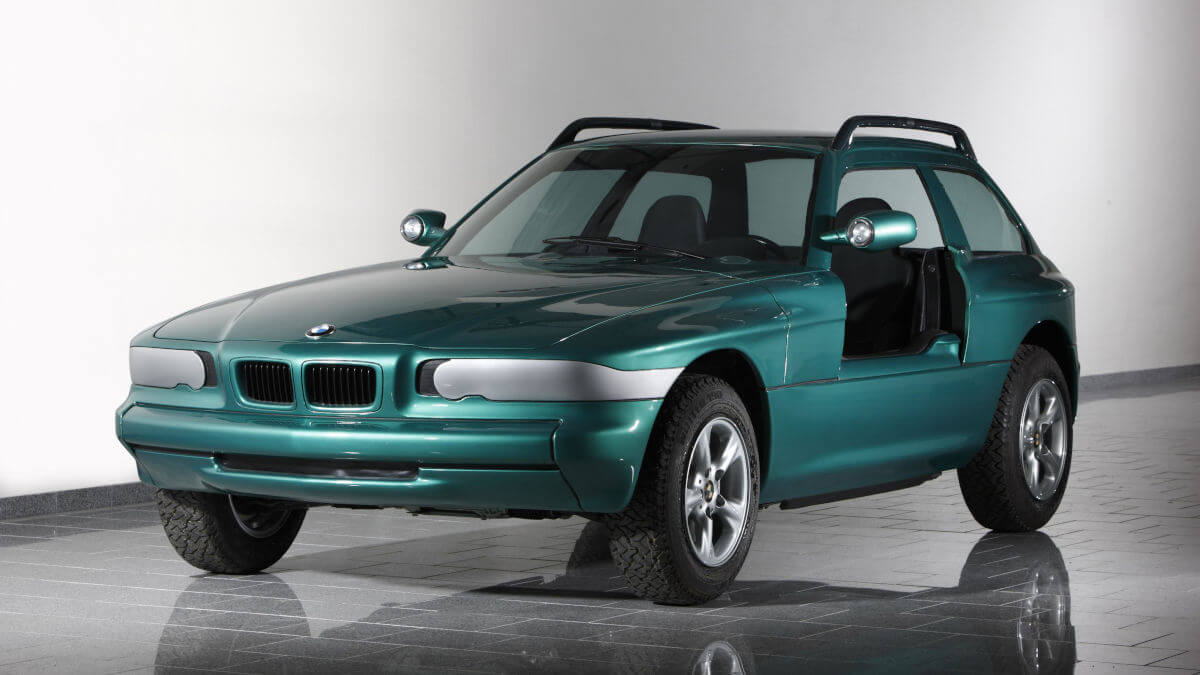



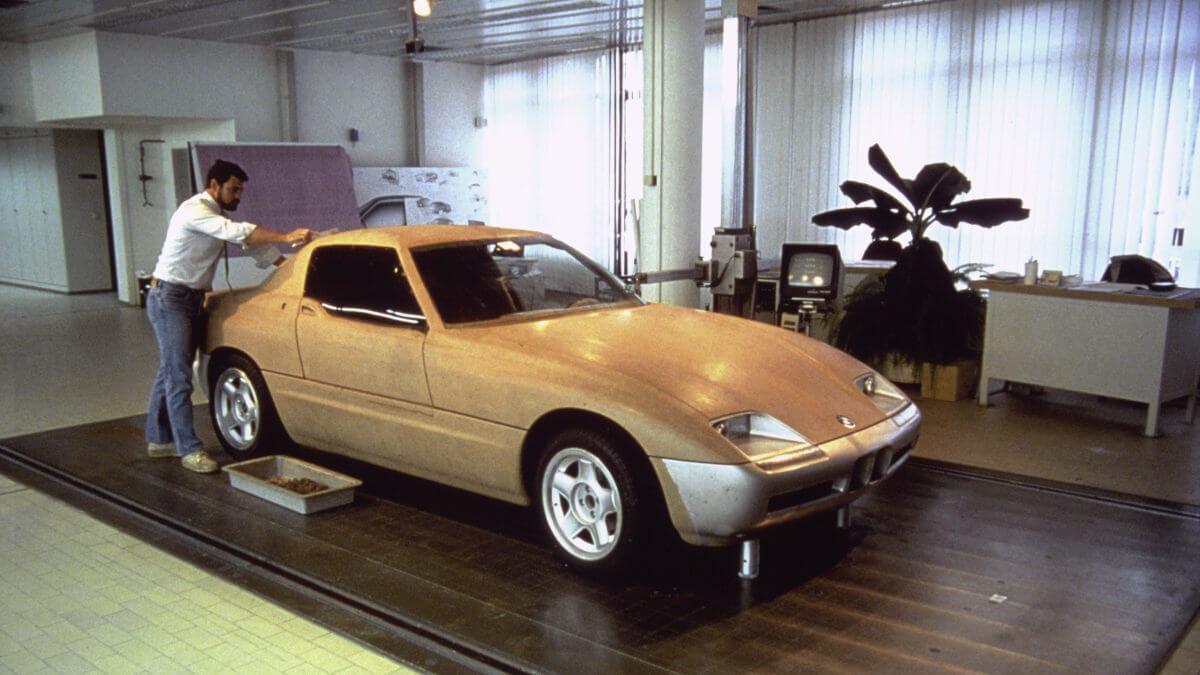

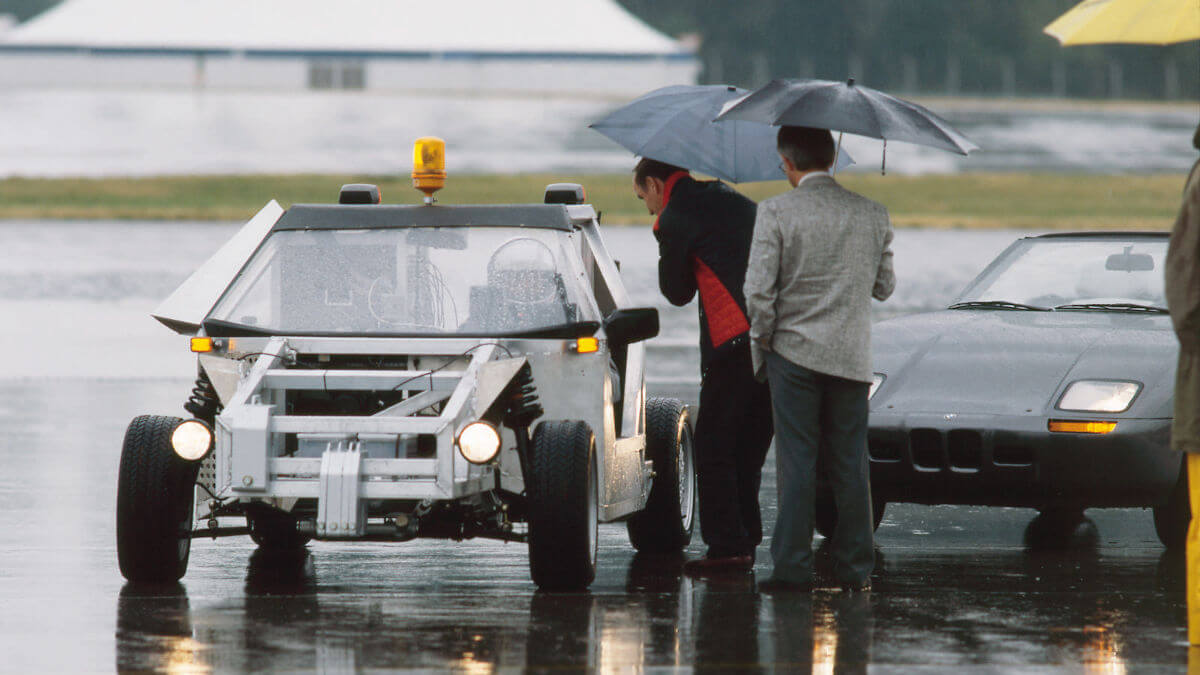





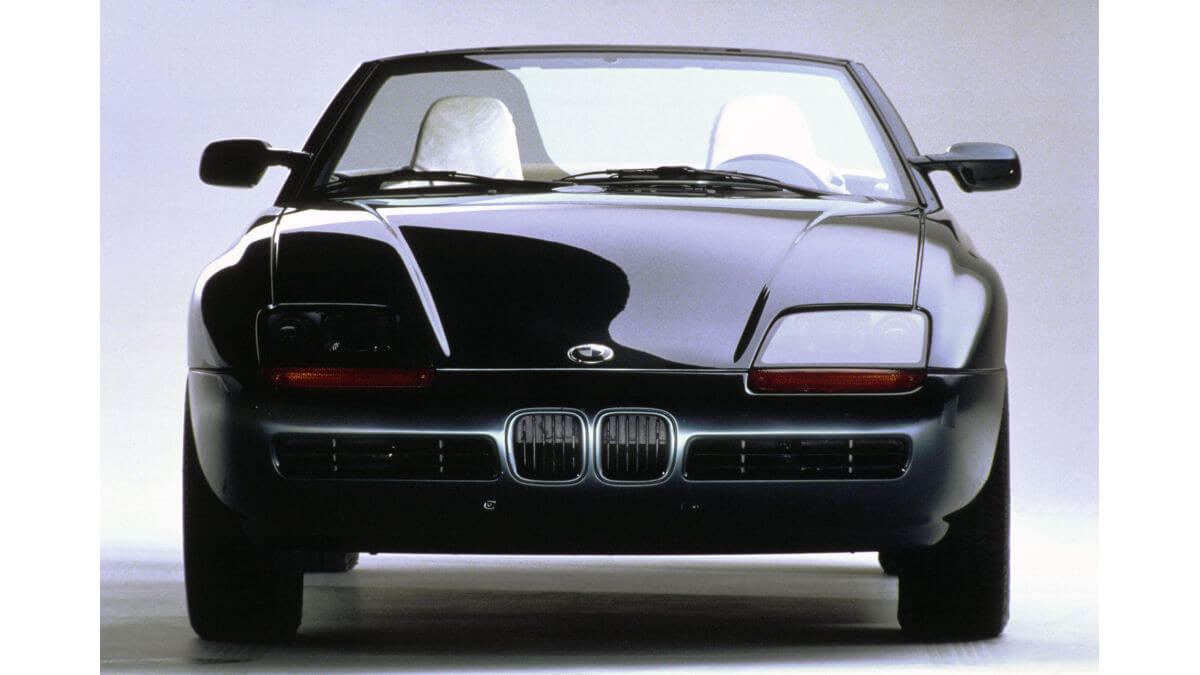





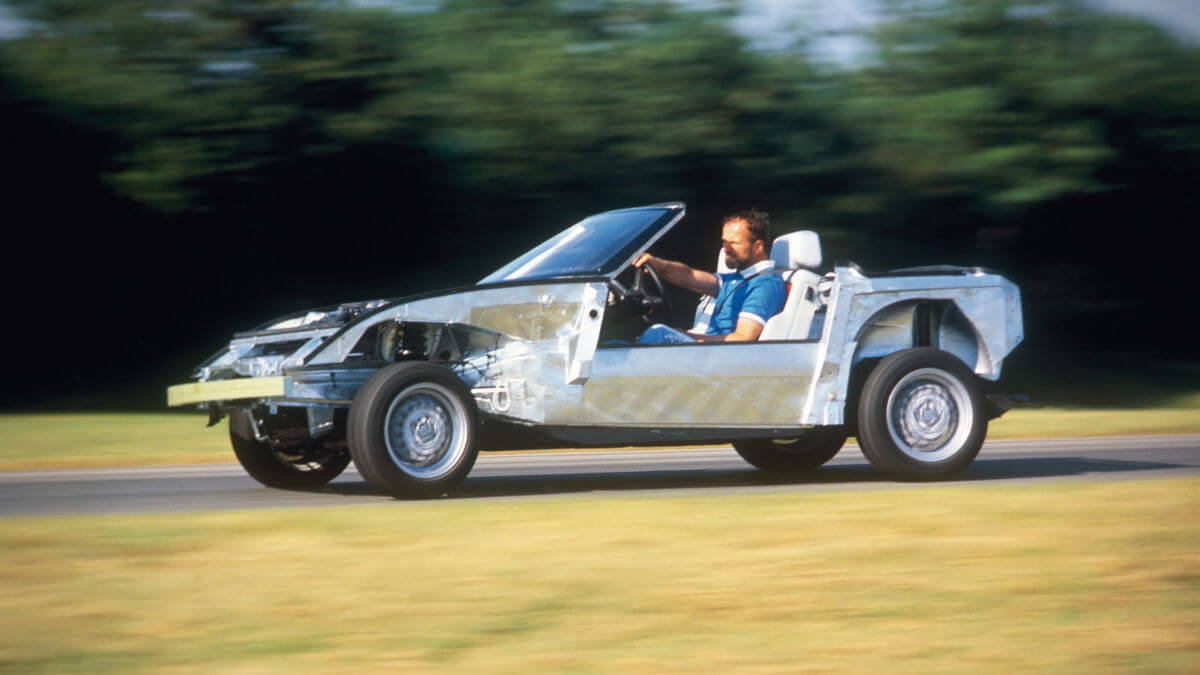



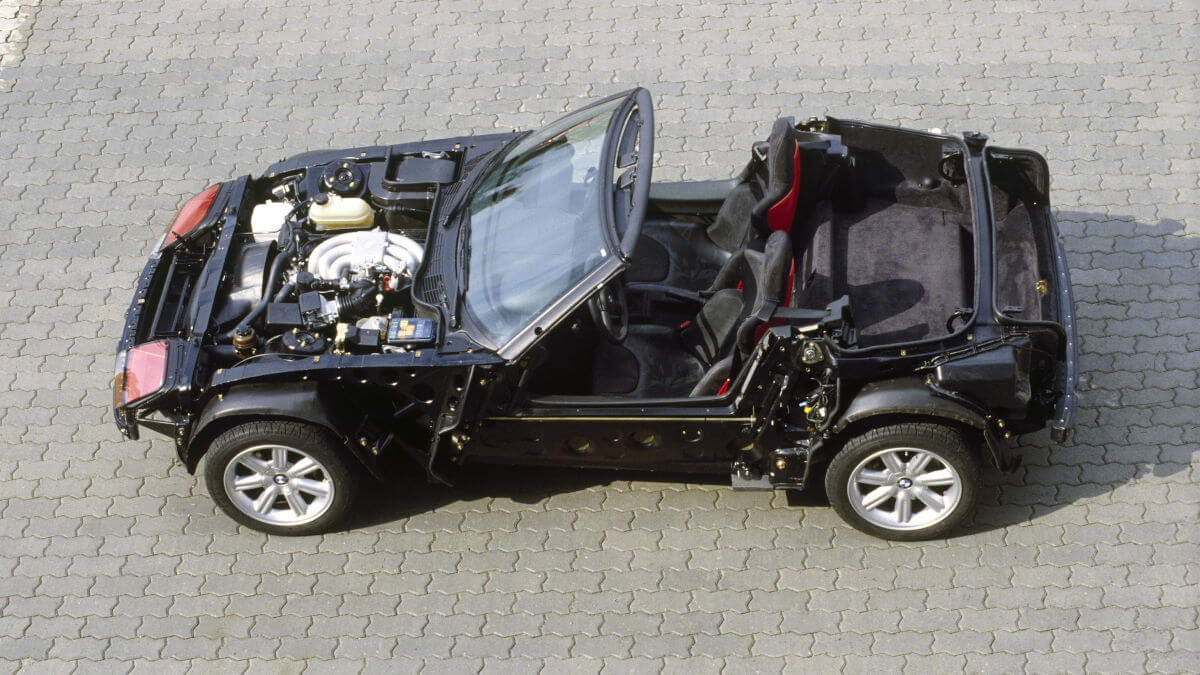





Jumping on a fender
Since the body was made of plastic, which was an innovation in body construction for BMW, the decision to build the Z1 in low volume was considered and finally agreed on. The fact that it would only be possible to produce the car in this expensive manual labor way was clear from the get go. According to all projections, a maximum of six cars per day would be able to roll off the production line at full capacity. Nevertheless, the world premiere of the Z1 was announced in August 1987 for the upcoming IAA. Experts who weren’t convinced by the car’s plastic bodywork were given lasting proof of its durability by the then head of BMW Technik GmbH. He jumped onto a fender lying on the ground, which promptly dented. Then he climbed down again, the part jumped back into its original shape. This man jumping was none other than the later head of Aston Martin, Dr. Ulrich Bez.
From IAA to series production in a year
From today’s perspective, BMW’s show appearance at the 1987 IAA can almost be described as “legendary”. In addition to the Z1, the very first 3-series Touring and, with the 750i, the first German series-produced twelve-cylinder engine of the post-war era celebrated their world debut. Despite great interest and many attempts to buy it, the reed-grass green pre-production Z1 remained in its place for the entire show. After all, it was one of only ten test vehicles built, each worth around two million DM. Following the IAA, final test drives were undertaken in order to be able to develop the roadster ready for series production. However, it was to be another year before the start production. Even though the Z1 objectively had the typical roadster features (two seats and a small soft top), from a technical point of view it was a completely new experience for BMW.
Stiffness and aerodynamics: top
A self-supporting monocoque made of steel parts welded together and then hot-dip galvanized provided enormous torsional rigidity. The zinc not only formed a rust-resistant protective layer. In the area of the sheet metal seams and overlaps, it was a connecting and load-bearing element that increased the stiffness by a further 25 percent. The plastic vehicle floor was partly bolted, partly glued on. It weighed a total of just 15 kilograms and provided a smooth underbody, which ensured excellent aerodynamics. The plastic outer skin was bolted to the steel monocoque and could thus be completely replaced within an hour. Since different types of plastic were used on the body depending on its intended use, new paints had to be found that had to have the same color and flexibility on every material.




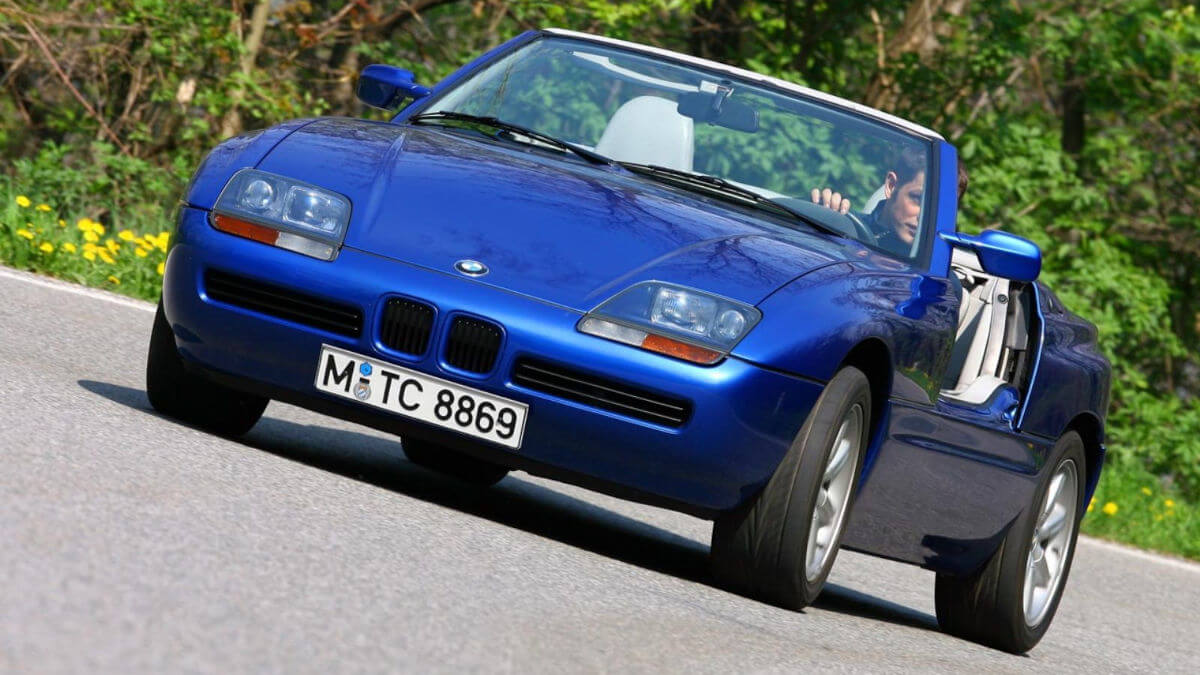



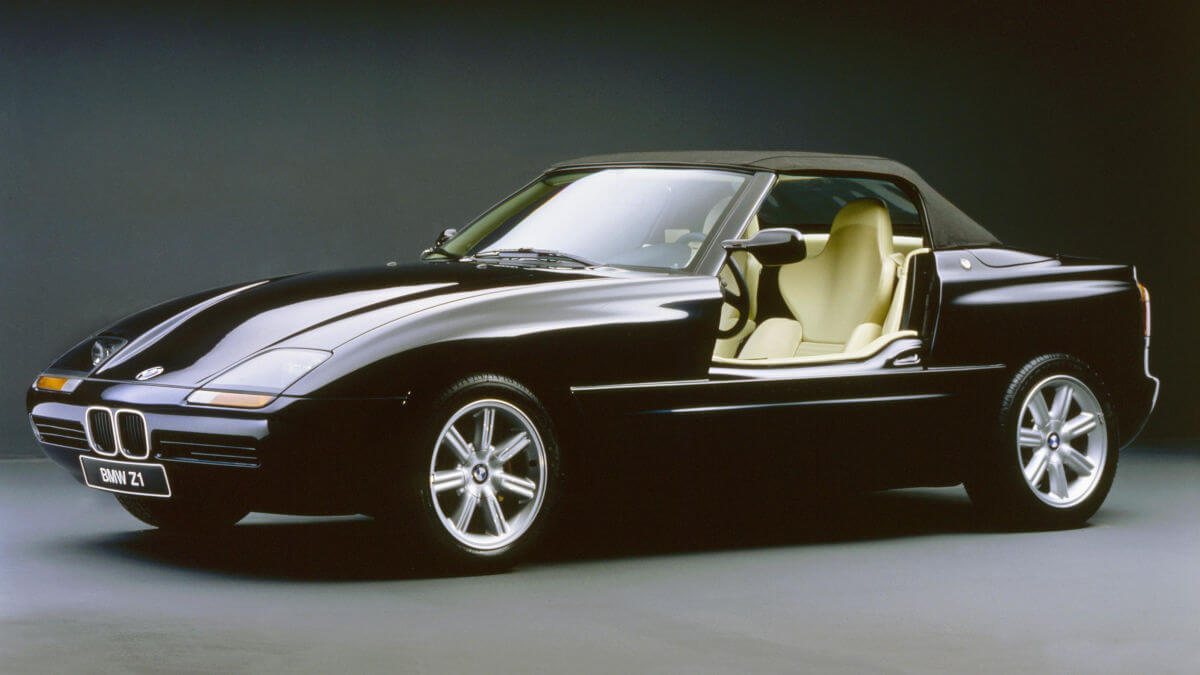









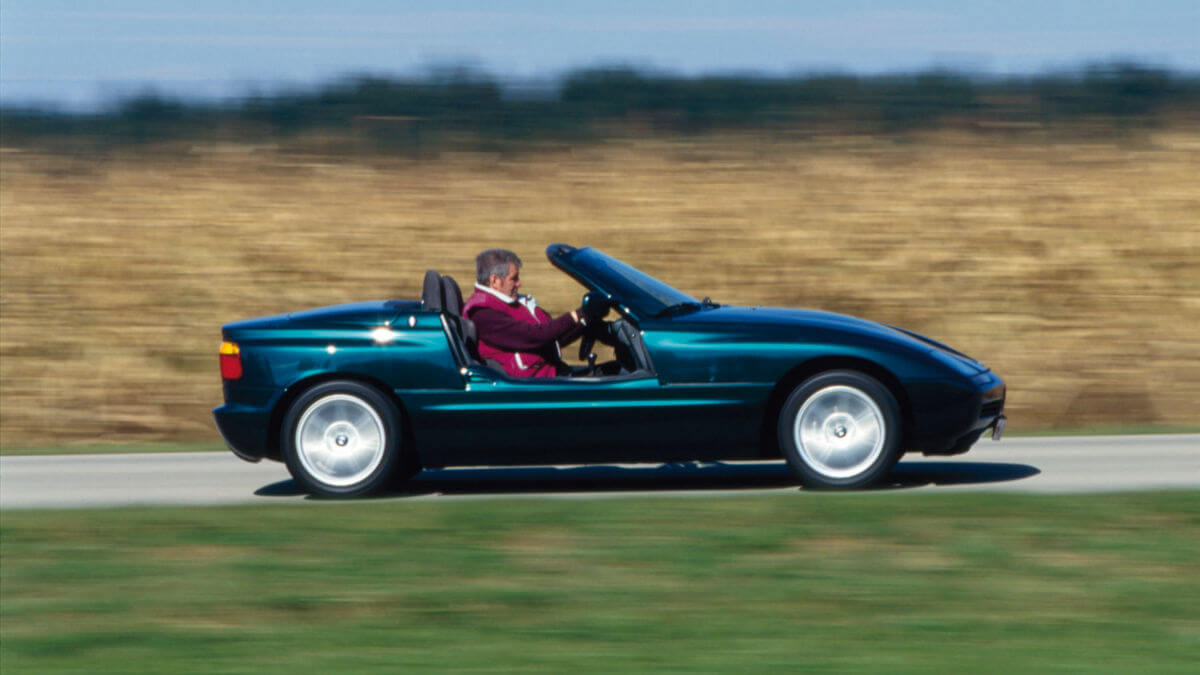

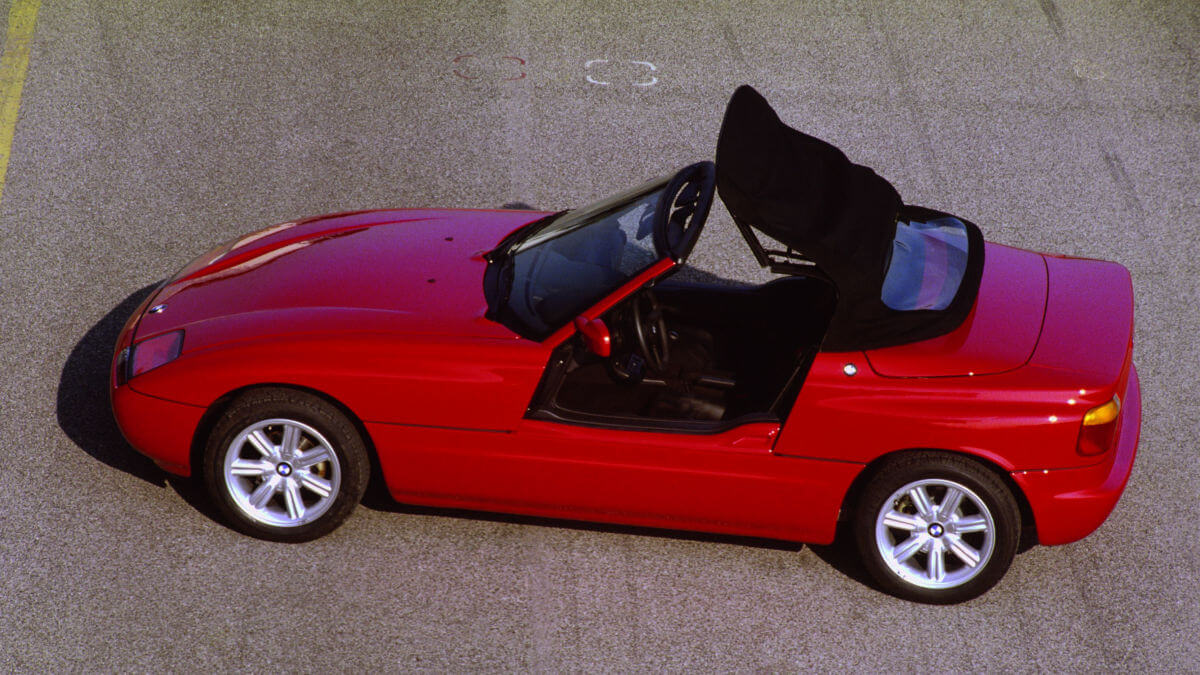



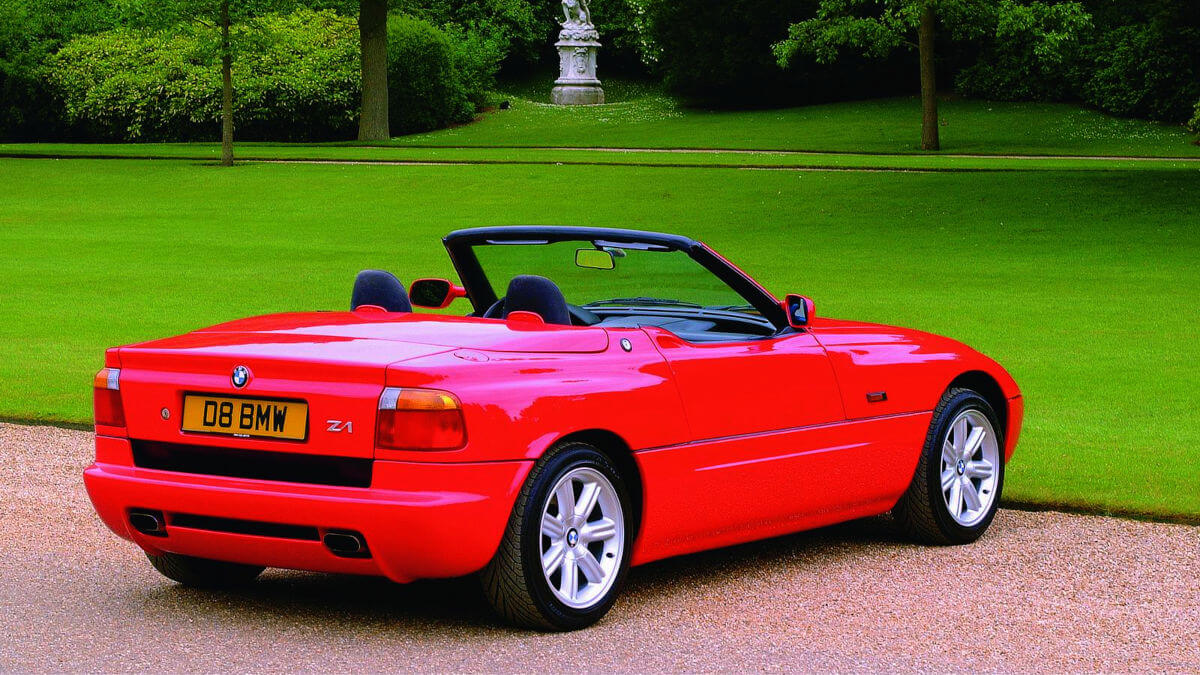

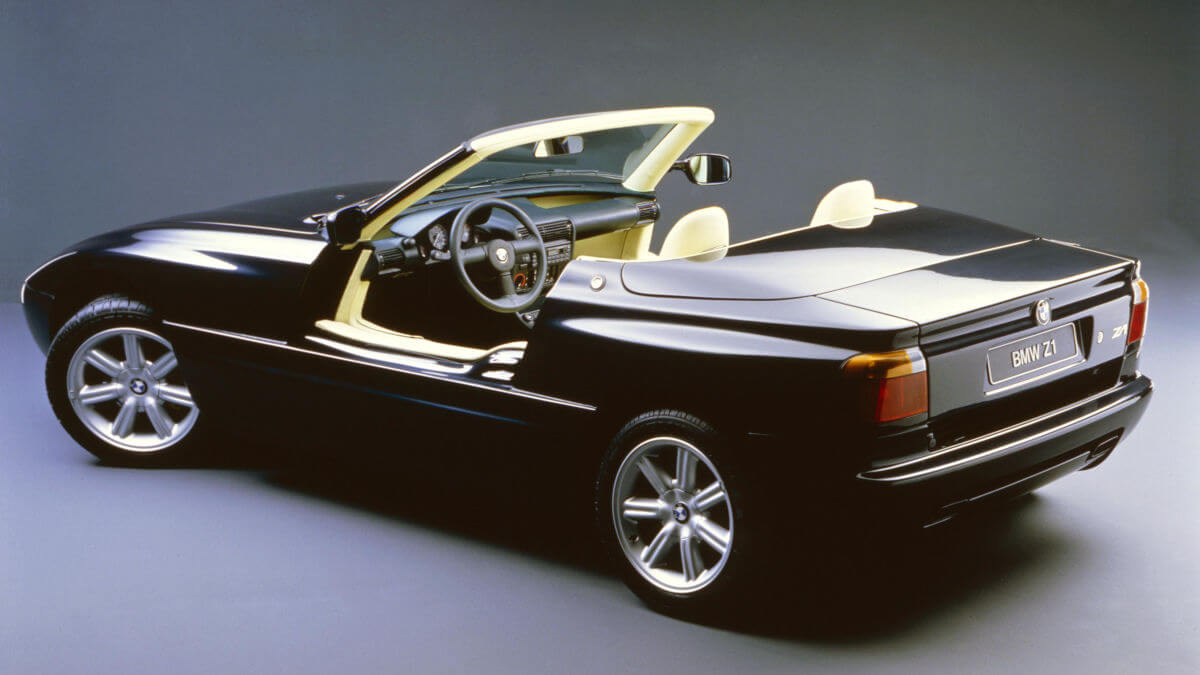





Doors could remain open
Initially, the BMW Z1 was available in a choice of “Dream Black metallic”, “Fun Yellow”, “Top Red” and “Urgrün metallic”. This was later followed by “Pure Black metallic” and “Magic Violet metallic”. In addition to the flat underbody, the body shape also contributed to the excellent aerodynamics. Thanks to its wedge shape and the flat windshield as well as the diffuser in the rear bumper, the Z1 manages without visible spoilers or wings that would harm the clear lines. Even the tailpipe of the exhaust system has been designed to be aerodynamically favorable, as it lies in front of the diffuser right in the airstream. When passengers entered the interior of the BMW Z1 through the electrically opening doors, they were left with the unique choice of whether or not to close them again for the ride. Thanks to the high side skirts, side crash safety was so high that permission was granted to drive with the doors open.
Typical roadster: colorful and spartan
Seats and door surfaces were covered with a leather-fabric combination available in a choice of dark grey, light grey, yellow or red. Thanks to the monocoque design, the driver and front passenger sit very low and, thanks to the high center tunnel and sills, in two seat recesses. The cockpit presented itself driver-oriented and puristic with two classic round instruments, ventilation control and radio. From today’s perspective, almost unbelievably spartan for a BMW, but the time of LED screens and full equipment was still far in the future 35 years ago. Nevertheless, when the BMW Z1 finally rolled into dealerships in the fall of 1988, it cost at least DM 83,000, 3,000 more than originally announced. But there were already around 4,000 pre-orders and enough interested parties willing to pay up to DM 20,000 extra for purchase contracts.
Driving characteristics of a go-kart
For the money the owners received technology from the then current 3-series beside the already described monocoque chassis and the new plastic body. Under the huge hood was the 2.5-liter inline six-cylinder engine with 125 kW/170 hp and 222 Nm of torque from the 325i. This made the Z1 as fast as 140 mph and accelerated it from a standstill to 62 mph in just under eight seconds. The power was transmitted to the rear axle via a five-speed manual gearbox. Thanks to front suspension from the 3-series (E30) and a newly developed multi-link rear suspension, the handling was described by more than a few testers as “go-kart-like”. The rear axle was later used in a similar form in the new 3-series (E36).


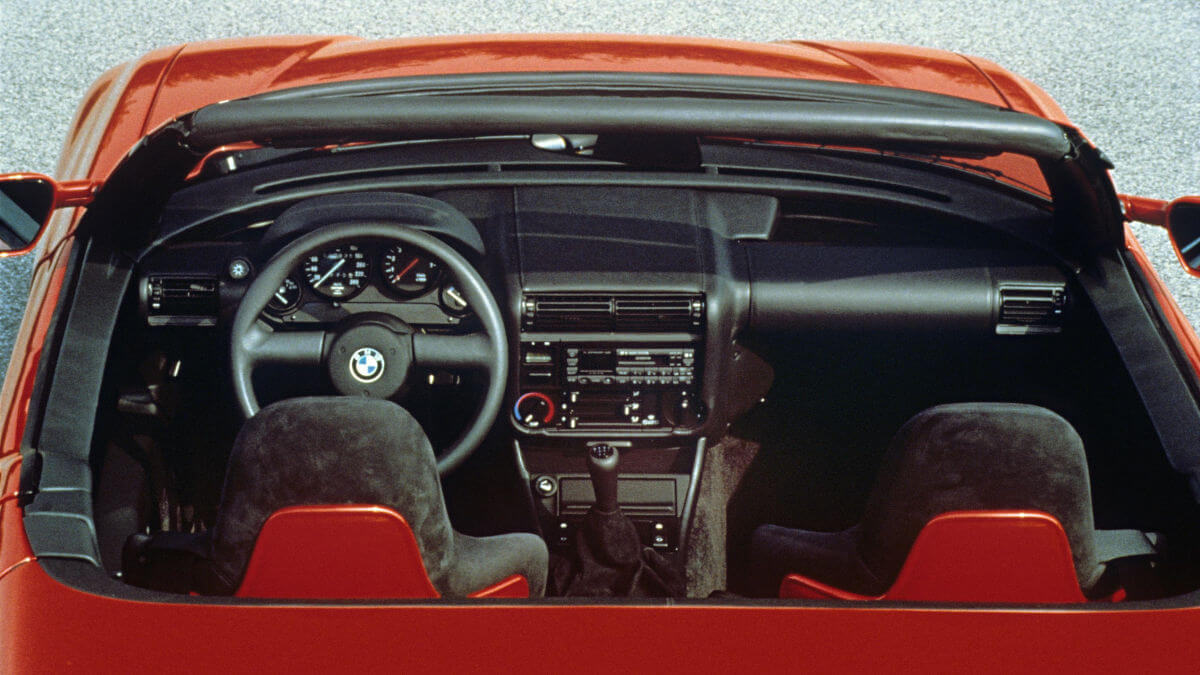





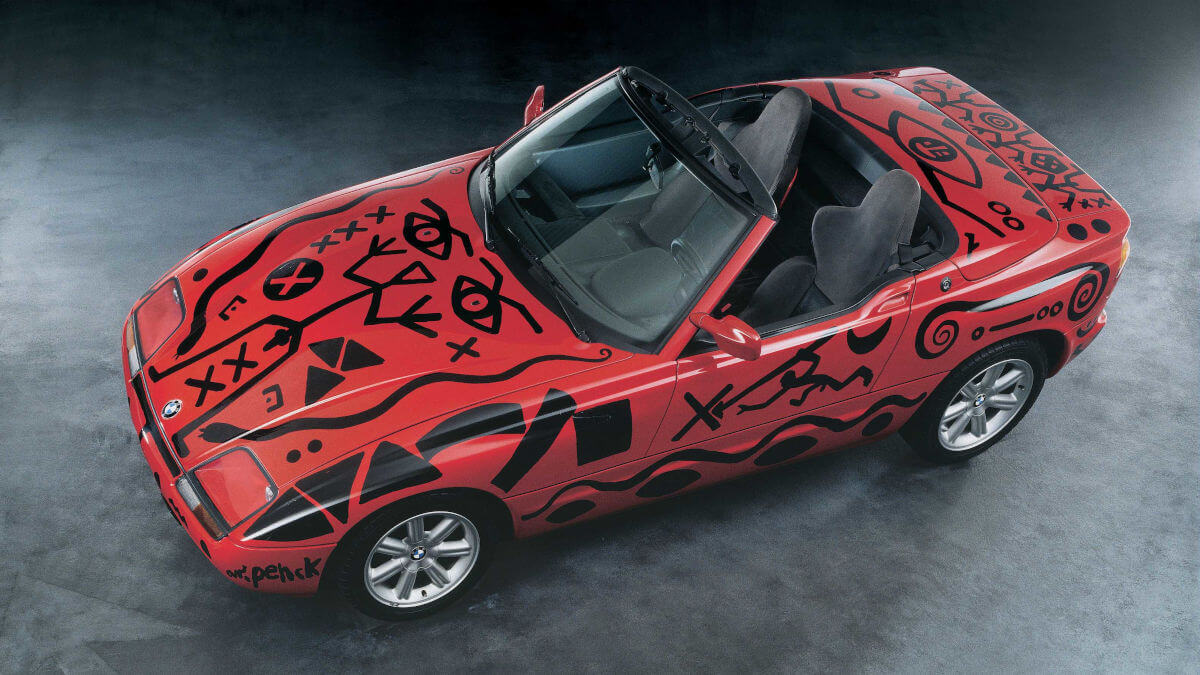



Alpina was also involved
In June 1991, production of the BMW Z1 ended after exactly 8,000 units had been built. 66 of these were converted by Alpina into the RLE (Roadster Limited Edition). Some of which were repainted in the typical color “Alpina Blue metallic”. The engine was bored out to 2.7 liters of displacement and produced 147 kW/200 hp, as well as 261 Nm of torque. A further seven or eight customer cars were later upgraded to the RLE specification on request. However, they have neither an Alpina chassis number nor a corresponding RLE badge in the interior. The special candy of BMW M GmbH, an already developed Z1 M, wasn’t brought up to production status and today ekes out an existence in the inventory of the M vehicle collection. With wide flared fenders, twin headlights, hoods behind the seats, wide dropping skirts at the front and rear, and two round taillights, it had a unique look.
Value doubled in ten years
A red Z1 was painted with black graffiti by German artist A.R. Pench and has been part of the select and unsaleable circle of BMW Art Cars ever since. Today, entry into the Z1 world starts at around € 44,000, doubling that value from ten years ago. Very good examples with little mileage and a proven history start € 10,000 higher. Rarities in new car condition achieve prices far above that. The few Alpina RLEs are rare and hard to find; after all, 50 percent of this small series went directly to Japan. Whoever buys a well-preserved BMW Z1 gets one thing in any case: unparalleled freedom when driving the car, even today, when the doors remain open. This feeling is only surpassed by exotics such as Donkervoort or Lotus 2-Eleven, but they lose out when it comes to everyday use. Happy Birthday BMW Z1, we hope to see some of your kind in the years to come.
Images: BMW, Alpina






